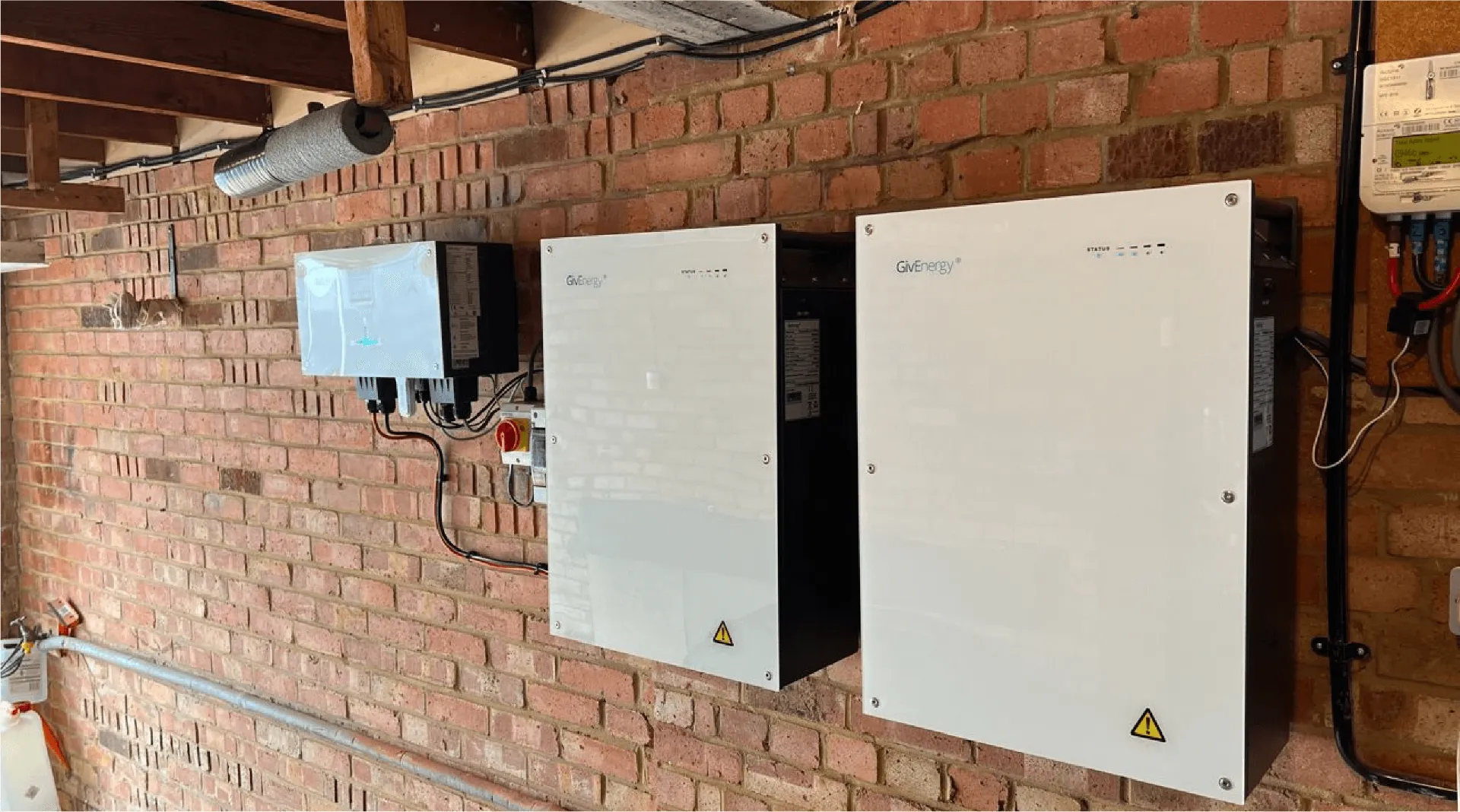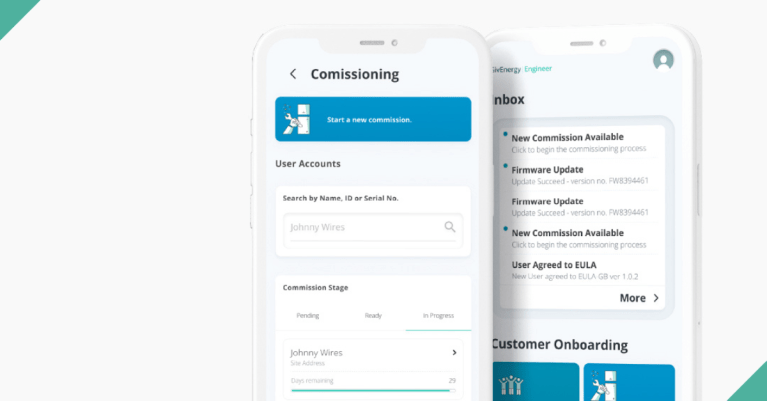‘How much solar storage do I need?’ is probably a question you’ve pondered if you have:
- Installed solar PV panels and want to retrofit a home storage battery
- Installed a home storage battery and want to retrofit solar PV panels
- Just started out on a fresh solar + storage project
Annoyingly, the answer is all too familiar…
‘It depends!’
It depends on the capacity of your solar panels, the electricity usage of your property, and how much sunlight you get, among other things.
In this 3-step guide, we’ll show you how to size battery storage for your solar panels.
Read on to find out more.
First things first: some solar panel basics
You don’t need us to tell you about the growth in solar panels as homes and businesses seek to be more energy resilient, and energy independent.
According to estimates for the UK, more than 1.3 million homes now have solar panel installations.
Solar PV or solar thermal? What’s the difference?
Solar PV panels absorb sunlight to generate electricity which you can use to power electrical devices.
On the other hand, solar thermal panels absorb sunlight to generate heat which you can use to heat water and power a heating system.
As we’re focused on electricity here, let’s just stick to solar PV panels for now.
Do solar panels need a battery storage system?
Strictly speaking, no.


However, without one, a lot of the electricity generated from your panels will go to waste. That’s because of the hour-to-hour variability of solar; you can’t just switch the sun on whenever you need power.
Instead, you should use a battery to store energy for later use, such as during the evening when energy prices peak.
The same is true for other renewables, such as wind.
Incidentally, you can also have a standalone battery storage system without solar panels. This is particularly beneficial for those on smart tariffs who don’t have the means to install renewable technology.
But that’s a topic for another time.
‘How much solar storage do I need?’ Found out in 3 easy steps
Step 1 – calculate your daily electricity usage
Your energy usage is measured in kilowatt hours (kWh).
Let’s walk through this with an example.
You have a TV in your home which uses 200 watts (0.2kW) of electricity.
You watch around two hours of TV per day.
To calculate usage in kWh, simply multiply the wattage by two. In this case:
0.2 x 2 = 0.4kWh
Here’s a general formula:
Power (kW) x no. of hours used = usage in kWh
Fortunately, viewing energy usage in your property has never been easier. Many people can do this through smart meters. For those with a GivEnergy battery storage system, monitoring can be done via the app or the more comprehensive portal.

Moreover, you can monitor electricity usage of individual devices via a smart plug.
Note that electricity usage varies depending on factors such as:
- The size of your property
- The number of people in your property
- The kinds of devices you use
You should also account for seasonal variations in electricity use. For example, if you have a heat pump, you may use this more during winter to heat your home.
For context, the average annual electricity usage for a 2-3 bedroom home in the UK comes to 2,700kWh, according to Ofgem.
Knowing your average electricity usage is a key step in correctly sizing your solar storage.
Step 2 – calculate the capacity of your solar panels
How much electricity you can get from your solar panels depends on numerous factors, some of which aren’t within your control.
Each solar panel comes with a power output measured in wattage. To calculate the daily output of electricity in kWh, you need to know how many hours of direct sunlight you’ll get.
You can then follow this formula:
Solar panel output x no. of hours of direct sunlight = daily electricity output
Here’s an example:
350W solar panel x 6 hours of daily direct sunlight = daily output of 2.1kWh
Unfortunately, calculating solar panel output isn’t quite as simple as following a formula.
The advertised wattage of a solar panel is based on ideal operating conditions. You should always assume that the actual output is lower.
Here are a few things which can impact upon how much electricity you can get from your solar panels:
- Type of solar panel – monocrystalline, polycrystalline, and CIGS thin-film all have varying levels of efficiency
- Number of sunlight hours per day
- Climate – areas with clearer skies and more sunlight are better for solar
- Direction and angle – generally, panels facing south in the northern hemisphere and north in the southern hemisphere perform better
By knowing roughly how much electricity your panels will produce, you can know how much electricity you can store in your battery storage system.
Step 3 – choose a battery storage system
You know your average daily electricity consumption. You have a rough idea of your solar capacity. Now it’s time to choose your battery.
As suitable battery storage size varies, this is perhaps best demonstrated with an example.
Let’s take a typical 3-bedroom UK home with three residents (a family of two parents and a child).
Their average annual electricity usage is 2,700kWh which works out at around 7.4kWh per day.
The family has already installed 5 solar panels with a capacity of 350W each. This gives a total capacity of 1,750W (1.75kW).
Average hours of direct sunlight in the area are in line with the UK average of 4.3 hours per day.
1.75kW x 4.3 = 7.53kWh
This is just about enough to cover average daily electricity needs.
In this case, the Giv-Bat 8.2 – with a capacity of 8.2kWh – could be a good choice.

‘What about days without sunny weather?’
We recognise that the above example makes a lot of assumptions.
On days when there is little or no sunlight, the family can still take advantage of their home storage battery by charging it during cheaper off-peak hours and discharging when electricity is more expensive.
Beyond that, the family can draw electricity from the grid whenever necessary, although this is something solar panels and battery storage aim to minimise.
‘What if the battery is under- or over-sized?’
If this is the case, it’s not the end of the world.
An under-sized battery could result in some solar energy being wasted.
Alternatively, the surplus energy that can’t be stored in a too-small battery could be exported to the grid under the UK government’s Smart Export Guarantee (SEG).
This logic also applies if the battery is over-sized. An over-sized battery with excess solar can be stored and, unless used to meet the family’s needs, exported back to the grid later on.
Solar panels and battery storage – a match made in heaven
Installing solar panels is a big step.
Aside from everything mentioned above, you should also consider the costs of solar panels – installation, estimated savings per year, break even point, etc.
And remember, solar panels need battery storage… assuming you don’t want energy to go to waste.
Hopefully, you’re now a little more clued up on how to choose the right solar storage system.
If you’re ready, look for an approved GivEnergy installer near you.








